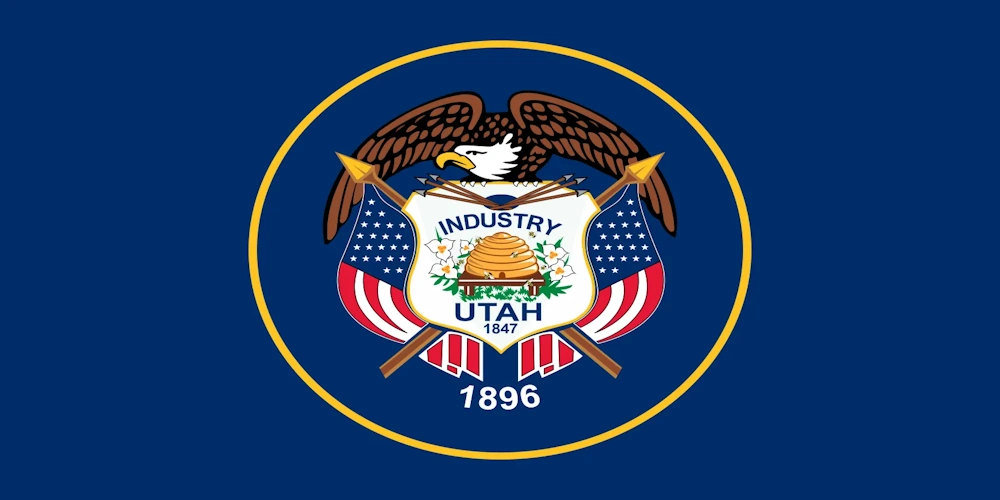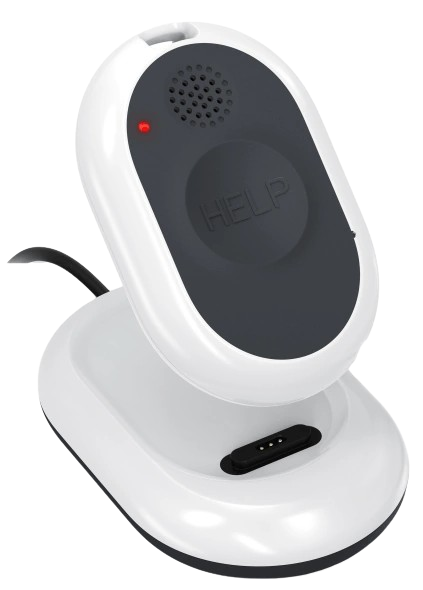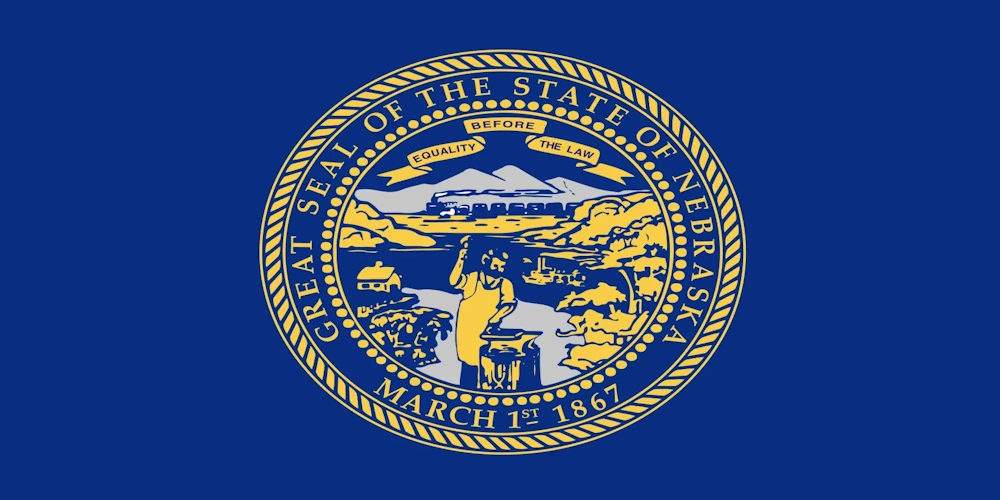In Utah, industries such as energy, construction, mining, healthcare, and transportation employ thousands of individuals who often work alone in remote or hazardous environments. These lone workers—who perform duties without direct supervision or coworkers nearby—face unique risks, from environmental hazards to delayed emergency response. Whether it’s a field technician in the Uinta Basin or a night-shift janitor in Salt Lake City, protecting lone workers is a critical responsibility for employers.
Utah operates its own OSHA-approved state safety program through the Utah Occupational Safety and Health (UOSH) Division, which is part of the Utah Labor Commission. UOSH enforces workplace safety laws for both public- and private-sector employers in the state, provided their regulations are at least as effective as those set by federal OSHA.
On This Page
Our Guide To Lone Worker Safety Policy And Legislation In Utah
Because Utah has its own OSHA-approved occupational safety and health program, employers must comply with UOSH standards, which closely mirror federal OSHA requirements. Although there is no specific rule that exclusively addresses lone workers, employers are still responsible for protecting workers who perform tasks in isolation.
Under the General Duty Clause, employers must identify and mitigate recognized hazards in the workplace. This obligation applies equally to employees working alone, where the risk of injury or delayed medical assistance may be higher. UOSH provides compliance resources, consultation services, and enforcement mechanisms to ensure employers are meeting these standards.
How Utah Defines A Lone Worker
There is no formal legal definition of “lone worker” in Utah law. However, within occupational safety best practices, a lone worker is someone who performs job duties without direct supervision and without immediate assistance available in case of an emergency.
Common lone worker roles in Utah include:
- Oil and gas field operators
- Home health aides and hospice care workers
- Agricultural workers on rural land
- Utility and telecommunication technicians
- Delivery drivers and couriers
- Overnight cleaning or maintenance staff
Each of these roles carries unique risks, requiring employers to implement targeted safety strategies.
Employing A Lone Worker In Utah
Employers in Utah must take practical steps to ensure the safety of employees working alone. This includes evaluating job-specific risks, ensuring open communication lines, and preparing for potential emergencies.
Recommended safety practices include:
- Performing Risk Assessments: Identify environmental and task-related hazards specific to lone work.
- Establishing Reliable Communication: Use mobile devices, radios, or dedicated lone worker apps to maintain contact.
- Creating Emergency Protocols: Provide workers with clear instructions for responding to incidents.
- Implementing Regular Check-Ins: Set up a schedule of check-ins to confirm worker safety throughout their shift.
- Providing Job-Specific Safety Training: Educate lone workers on hazard recognition, safety equipment, and escalation procedures.
These steps help ensure employers stay compliant with UOSH standards while creating a safer work environment for isolated staff.
Learn How You Can Protect Your Employees With Loneworker.com

With Loneworker.com you can be equipped with the knowledge and the means to protect your employees and protect your business. Contact us today to learn more about how Loneworker.com can protect you and your employees.
How The Safe Lone Worker App Can Protect Utah Lone Workers And Employers
The Safe Lone Worker app is a valuable tool for Utah employers seeking to protect employees working in remote or hazardous conditions. With features like GPS tracking, check-in scheduling, panic button alerts, and automatic fall detection, the app allows real-time monitoring and fast emergency response.
This technology helps businesses in Utah improve worker safety, reduce liability, and demonstrate compliance with UOSH’s safety expectations—even in rugged or rural regions.
Utah Lone Worker Policies
Utah enforces workplace safety through its state-run OSHA plan, administered by the Utah Occupational Safety and Health (UOSH) Division within the Utah Labor Commission. UOSH covers both public- and private-sector employees and requires compliance with safety standards that are at least as effective as those set by federal OSHA.
For official guidance and the most up-to-date requirements, visit the UOSH section of the Utah Labor Commission website. This article is intended for general informational purposes and should not replace professional legal or regulatory consultation.
Utah Lone Worker Resources
OHS Contact Centre
- 1-866-415-8690
CDC / NIOSH
- 800-232-4636

Affordable Monitoring For Lone Workers In Utah

-
 Monitoring Your Employees' Safety
Monitoring Your Employees' Safety
-
 GPS Tracking And Monitoring
GPS Tracking And Monitoring
-
 Man Down Panic Alerts
Man Down Panic Alerts
-
 24/7 Protection Anywhere
24/7 Protection Anywhere
Lone Worker Legislation
Lone Worker Safety Policies And Legislation By State
-
 Alabama State Safety Policies And Legislation
Alabama State Safety Policies And Legislation
-
 Alaska State Safety Policies And Legislation
Alaska State Safety Policies And Legislation
-
 Arizona State Safety Policies And Legislation
Arizona State Safety Policies And Legislation
-
 Arkansas State Safety Policies And Legislation
Arkansas State Safety Policies And Legislation
-
 California State Safety Policies And Legislation
California State Safety Policies And Legislation
-
 Colorado State Safety Policies And Legislation
Colorado State Safety Policies And Legislation
-
 Connecticut State Safety Policies And Legislation
Connecticut State Safety Policies And Legislation
-
 Delaware State Safety Policies And Legislation
Delaware State Safety Policies And Legislation
-
 Florida State Safety Policies And Legislation
Florida State Safety Policies And Legislation
-
 Georgia State Safety Policies And Legislation
Georgia State Safety Policies And Legislation
-
 Hawaii State Safety Policies And Legislation
Hawaii State Safety Policies And Legislation
-
 Idaho State Safety Policies And Legislation
Idaho State Safety Policies And Legislation
-
 Illinois State Safety Policies And Legislation
Illinois State Safety Policies And Legislation
-
 Indiana State Safety Policies And Legislation
Indiana State Safety Policies And Legislation
-
 Iowa State Safety Policies And Legislation
Iowa State Safety Policies And Legislation
-
 Kansas State Safety Policies And Legislation
Kansas State Safety Policies And Legislation
-
 Kentucky State Safety Policies And Legislation
Kentucky State Safety Policies And Legislation
-
 Louisiana State Safety Policies And Legislation
Louisiana State Safety Policies And Legislation
-
 Maine State Safety Policies And Legislation
Maine State Safety Policies And Legislation
-
 Maryland State Safety Policies And Legislation
Maryland State Safety Policies And Legislation
-
 Massachusetts State Safety Policies And Legislation
Massachusetts State Safety Policies And Legislation
-
 Michigan State Safety Policies And Legislation
Michigan State Safety Policies And Legislation
-
 Minnesota State Safety Policies And Legislation
Minnesota State Safety Policies And Legislation
-
 Mississippi State Safety Policies And Legislation
Mississippi State Safety Policies And Legislation
-
 Missouri State Safety Policies And Legislation
Missouri State Safety Policies And Legislation
-
 Montana State Safety Policies And Legislation
Montana State Safety Policies And Legislation
-
 Nebraska State Safety Policies And Legislation
Nebraska State Safety Policies And Legislation
-
 Nevada State Safety Policies And Legislation
Nevada State Safety Policies And Legislation
-
 New Hampshire State Safety Policies And Legislation
New Hampshire State Safety Policies And Legislation
-
 New Jersey State Safety Policies And Legislation
New Jersey State Safety Policies And Legislation
-
 New Mexico State Safety Policies And Legislation
New Mexico State Safety Policies And Legislation
-
 New York State Safety Policies And Legislation
New York State Safety Policies And Legislation
-
 North Carolina State Safety Policies And Legislation
North Carolina State Safety Policies And Legislation
-
 North Dakota State Safety Policies And Legislation
North Dakota State Safety Policies And Legislation
-
 Ohio State Safety Policies And Legislation
Ohio State Safety Policies And Legislation
-
 Oklahoma State Safety Policies And Legislation
Oklahoma State Safety Policies And Legislation
-
 Oregon State Safety Policies And Legislation
Oregon State Safety Policies And Legislation
-
 Pennsylvania State Safety Policies And Legislation
Pennsylvania State Safety Policies And Legislation
-
 Rhode Island State Safety Policies And Legislation
Rhode Island State Safety Policies And Legislation
-
 South Carolina State Safety Policies And Legislation
South Carolina State Safety Policies And Legislation
-
 South Dakota State Safety Policies And Legislation
South Dakota State Safety Policies And Legislation
-
 Tennessee State Safety Policies And Legislation
Tennessee State Safety Policies And Legislation
-
 Texas State Safety Policies And Legislation
Texas State Safety Policies And Legislation
-
 Utah State Safety Policies And Legislation
Utah State Safety Policies And Legislation
-
 Vermont State Safety Policies And Legislation
Vermont State Safety Policies And Legislation
-
 Virginia State Safety Policies And Legislation
Virginia State Safety Policies And Legislation
-
 Washington State Safety Policies And Legislation
Washington State Safety Policies And Legislation
-
 West Virginia State Safety Policies And Legislation
West Virginia State Safety Policies And Legislation
-
 Wisconsin State Safety Policies And Legislation
Wisconsin State Safety Policies And Legislation
-
 Wyoming State Safety Policies And Legislation
Wyoming State Safety Policies And Legislation
-
 American Samoa State Safety Policies And Legislation
American Samoa State Safety Policies And Legislation
-
 Guam State Safety Policies And Legislation
Guam State Safety Policies And Legislation
-
 Northern Mariana Islands State Safety Policies And Legislation
Northern Mariana Islands State Safety Policies And Legislation
-
 Puerto Rico State Safety Policies And Legislation
Puerto Rico State Safety Policies And Legislation
-
 Washington D.C. State Safety Policies And Legislation
Washington D.C. State Safety Policies And Legislation
-
 Virgin Isles State Safety Policies And Legislation
Virgin Isles State Safety Policies And Legislation







